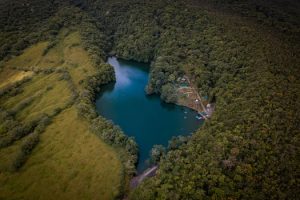Deepfake Detection: Tools to Combat Misinformation
With the rise of technology and social media, the spread of misinformation has become an ever-increasing issue. The ease of access to information and the ability to manipulate content have given rise to a new form of deception known as deepfakes. These fake videos, audio recordings, and images, created using artificial intelligence (AI), have the potential to alter reality, deceive viewers, and stir up chaos. In the digital age, it has become crucial to find ways to combat this threat and protect the integrity of information. In this article, we will explore the emerging tools and techniques to detect and combat deepfakes, and how they can aid in curbing the spread of misinformation.
The Rise of Deepfakes
Deepfakes, also known as synthetic media, refer to hyper-realistic videos, audio recordings, or images created using AI and machine learning technology. These tools use algorithms to manipulate existing footage or images to create new and often, convincing content. While there are positive uses for this technology, such as in film or creating virtual models, their potential for misuse cannot be overlooked.
The term itself was coined in 2017 when a user on Reddit posted fake pornographic videos using the face of celebrities. Since then, deepfakes have evolved and become a global concern due to their potential to manipulate information, influence public opinion, and undermine trust.
The Threat of Deepfakes
The most significant danger posed by deepfakes is their potential to spread false information, leading to the manipulation of public opinions and creating chaos. For instance, a deepfake of a politician making controversial statements could sway voters or cause societal unrest. Additionally, these tools can also be used for financial fraud, damage to reputations, and even to incite violence.
Moreover, the use of deepfakes in the current pandemic has amplified their potential threat. Fake news about the virus, created using this technology, has caused confusion, fear, and hindered public health efforts. In such circumstances, the need for effective tools to detect and combat deepfakes becomes crucial.
Deepfake Detection
Catching deepfakes requires advanced technology and expertise, which has led to the development of various tools and methods. Here are some approaches that are being used to detect deepfakes:
Artificial Intelligence
As the technology behind deepfakes advances, so does the technology to detect them. AI-powered algorithms can analyze thousands of videos, images, and audio files to detect anomalies and identify signs of manipulation. These tools use deep learning processes, such as facial recognition and content analysis, to identify any discrepancies and flag them as potential deepfakes. However, as the deepfake technology improves, so does the AI technology needed to detect it, making this an ongoing battle.
Reverse Engineering
Another method to detect deepfakes is through reverse engineering. This involves analyzing the video or image for any traces of editing or manipulation. Experts can look for signs like unnatural eye movements, glitches, or discrepancies in lighting and details to determine if the content has been altered.
Media Forensics
Media forensics is a branch of digital forensics that involves analyzing digital media to determine authenticity and manipulation. This involves examining the metadata, timestamps, and hidden data in the content to identify if it has been altered. Experts can also analyze the coding used to create deepfakes to identify any patterns or signatures that indicate manipulation.
Combating Misinformation with Deepfake Detection
The fight against deepfakes and misinformation requires a multi-faceted approach. Along with advanced detection tools, there is a need for education, media literacy, and responsible content creation. Social media platforms have also taken steps to curb the spread of deepfakes by implementing policies and technologies to flag or remove such content.
Additionally, the development of deepfake detection tools can also assist in verifying content and preventing the spread of false information. Websites like “Sensity” have created an online deepfake detector that allows users to submit any potentially fake content for verification by experts. Google is also working on a tool called “Assemble” that will analyze images and video metadata to detect manipulation and deepfakes.
Conclusion
As technology evolves, so does the threat of deepfakes and the spread of misinformation. Effective detection tools, along with media literacy and responsible content creation, can help in combating this danger. The development of advanced AI technology and media forensics can aid in detecting deepfakes and protecting the integrity of information. However, it will require continuous efforts and collaborations to stay ahead of this constantly evolving technology and its potential misuse.







